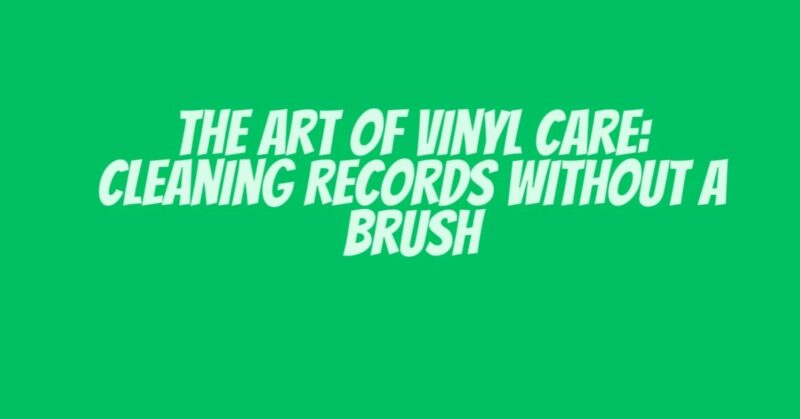Vinyl records have been cherished by audiophiles and music enthusiasts for decades due to their warm analog sound. However, to maintain their sonic integrity and prolong their lifespan, regular cleaning is essential. While many enthusiasts use specialized brushes to clean their records, not everyone has access to these tools. In this comprehensive guide, we will explore various methods and techniques for cleaning records without a brush, ensuring your vinyl collection remains in pristine condition.
Why Cleaning Vinyl Records Matters
Vinyl records are delicate and susceptible to dust, dirt, and static buildup. These contaminants can affect playback quality and cause long-term damage to the grooves. Here’s why cleaning your records is crucial:
- Sound Quality: Dust and debris can lead to pops, crackles, and background noise during playback, diminishing the overall listening experience.
- Stylus Preservation: A dirty record can prematurely wear out your stylus (needle), leading to a loss of fidelity and the need for costly replacements.
- Longevity: Regular cleaning can extend the life of your records, ensuring that your cherished vinyl collection remains enjoyable for years to come.
Cleaning Methods Without a Brush
If you find yourself without a dedicated record brush, there are alternative methods and household items you can use to clean your records effectively:
1. Microfiber Cloth:
- A clean, lint-free microfiber cloth is an excellent substitute for a brush. Gently wipe the record’s surface in a circular motion, following the grooves.
- Be sure to use a clean, dry cloth, as moisture can damage your records. For stubborn spots, dampen the cloth slightly with distilled water and wipe carefully.
2. Compressed Air:
- Use a can of compressed air to blow away loose dust and debris from the record’s surface.
- Hold the can at a distance to avoid introducing moisture or chemicals to the record.
3. Static Removal:
- Static electricity can attract dust to your records. To reduce static, place the record on a clean, anti-static mat before playing it.
- You can also use an anti-static brush or a carbon-fiber brush to remove static charge.
4. Distilled Water and Soft Cloth:
- For deeper cleaning, use distilled water and a soft, lint-free cloth.
- Dampen the cloth slightly with distilled water, not tap water, to prevent mineral deposits. Wipe the record gently along the grooves.
- Dry the record thoroughly with a separate dry cloth to avoid water damage.
5. Wood Glue Method:
- This method should be used as a last resort for deeply embedded dirt.
- Apply a thin layer of wood glue (PVA-based) evenly across the record’s surface, avoiding the label.
- Let the glue dry completely (usually 24-48 hours). Once dry, carefully peel off the glue layer, and it will lift dirt and debris with it.
6. Commercial Record Cleaning Solutions:
- If you have access to a record cleaning solution, follow the manufacturer’s instructions for cleaning without a brush. Typically, you apply the solution, spread it evenly, and wipe it off with a cloth.
- Ensure the solution is specifically designed for vinyl records to avoid damage.
7. Sleeve Maintenance:
- In addition to cleaning the vinyl, ensure that the inner and outer sleeves are clean and free of dust and debris.
- Dirty sleeves can reintroduce contaminants to the record’s surface.
Conclusion
Cleaning vinyl records is an essential part of vinyl care, and you don’t always need a dedicated brush to achieve excellent results. Whether you opt for a microfiber cloth, compressed air, or other DIY methods, the key is to handle your records with care and attention. Regular cleaning will not only enhance your listening experience but also preserve your vinyl collection for years of enjoyment.


